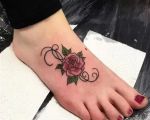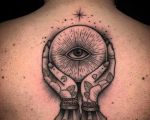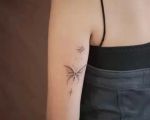Japanese Tattoo Artists in California: Best Artists and Styles to Look For
As a tattoo enthusiast who’s been fascinated by the art of Japanese tattoos for years, I can confidently say that California is one of the best places to find exceptional Japanese tattoo artists. The blend of diverse cultures and the growing appreciation for traditional art forms in the state has led to a thriving tattoo scene, where skilled artists specialize in the intricate beauty of Japanese-style tattoos. From full back pieces to delicate sleeve tattoos, these artists have mastered the centuries-old art form and are now bringing it to life for tattoo lovers across California.
During my journey to explore some of the most renowned Japanese tattoo artists in California, I’ve discovered that the art is more than just skin deep. It’s a tradition that’s been passed down through generations, with rich symbolism, vibrant colors, and a profound connection to nature and spirituality. Whether you’re considering your first Japanese tattoo or are already familiar with the style, this guide will walk you through some of the best artists in California, the significance behind the tattoos, and why this style continues to be so popular today.
1. What Makes Japanese Tattoos Unique?
Japanese tattoos, or “irezumi,” are not just about beautiful designs; they’re deeply rooted in history, culture, and symbolism. The distinct feature of Japanese tattooing is the intricate linework, shading, and the meticulous attention to detail that artists apply when creating each piece. The tattoos are often large and cover significant portions of the body, such as the back, sleeves, or chest.
One of the most intriguing aspects of Japanese tattoos is the symbolism behind the designs. Every element in a Japanese tattoo holds meaning, from the koi fish representing perseverance and strength to the dragon symbolizing power and wisdom. Some tattoos feature mythological creatures, such as tigers or phoenixes, while others incorporate elements from nature, like flowers and waves. The storytelling aspect is what makes Japanese tattoos so captivating and personal for many people.
2. Popular Japanese Tattoo Styles in California
California is home to a wide variety of tattoo styles, but Japanese tattoos stand out for their historical depth and vibrant imagery. In my experience, some of the most popular Japanese tattoo styles in California include:
2.1 Irezumi
The traditional style of Japanese tattooing, Irezumi, has been practiced for centuries. It involves large, detailed tattoos that often cover the entire back or arms, and they are known for their bold outlines, extensive shading, and the use of vivid colors. The designs can include mythical creatures, such as dragons, tigers, and samurais, along with nature-inspired elements like cherry blossoms and waves.
2.2 Koi Fish Tattoos
Koi fish tattoos are among the most recognizable and iconic symbols in Japanese tattooing. These tattoos often represent perseverance, determination, and the ability to overcome adversity. Koi fish tattoos are typically designed with flowing water and vibrant colors, making them a striking choice for anyone interested in Japanese tattoos. In California, many tattoo artists specialize in these detailed designs, and I’ve had the privilege of witnessing some incredible koi fish pieces in local studios.
2.3 Yakuza-Inspired Tattoos
Another popular style in California is Yakuza-inspired tattoos. These tattoos often feature intricate depictions of Yakuza members, samurais, and other elements associated with Japanese gang culture. While these tattoos are steeped in history and controversy, they also represent the strength and honor of the Yakuza. Many people choose this style because it reflects a sense of resilience and individuality, making it a bold statement piece.
3. Where to Find the Best Japanese Tattoo Artists in California
California boasts a wide range of tattoo studios that specialize in Japanese tattoo styles. Whether you're in Los Angeles, San Francisco, or San Diego, there’s a talented artist waiting to bring your vision to life. Here are some of the best studios in California where you can find world-class Japanese tattoo artists:
3.1 Shige’s Studio in Los Angeles
Shige is a renowned Japanese tattoo artist based in Los Angeles, and his studio has become a go-to destination for fans of traditional Japanese tattoo art. Known for his meticulous linework and ability to bring life to complex designs, Shige’s tattoos are characterized by their fluidity and precision. I’ve had the opportunity to meet some of his clients, and the stories they shared about their tattoos were as moving as the artwork itself. Whether you’re looking for a koi fish or a full-body irezumi tattoo, Shige’s studio is a must-visit for anyone serious about Japanese tattoo art.
3.2 The Black Anchor Collective in Hollywood
The Black Anchor Collective is home to several talented Japanese tattoo artists who have made a name for themselves in the LA tattoo scene. The artists at this studio specialize in traditional Japanese designs and can work with clients to create custom tattoos that reflect personal stories and cultural symbolism. Whether you want a large-scale back piece or a smaller, detailed design, the artists at Black Anchor are experts at bringing your ideas to life with precision and creativity.
3.3 Tattoo City in San Francisco
In San Francisco, Tattoo City is a top destination for anyone interested in Japanese-style tattoos. This studio has a rich history and is home to some of the best tattoo artists in the Bay Area. They are known for their commitment to traditional tattoo techniques and their ability to create tattoos that have both artistic value and deep personal meaning. Tattoo City is perfect for anyone who wants to experience Japanese tattooing in a welcoming and professional environment.
4. How to Choose the Right Japanese Tattoo Artist
Choosing the right tattoo artist is an essential part of the process, especially when it comes to Japanese tattoos. I’ve learned that there are a few key things to consider when selecting an artist:
- Research the Artist’s Portfolio: Japanese tattoos are incredibly intricate and require a high level of skill. Before choosing an artist, make sure to look at their portfolio to ensure their style aligns with what you’re looking for.
- Ask About the Artist’s Experience: It’s important to choose an artist who has experience with Japanese tattoos, as they require specific techniques and a deep understanding of the symbolism behind the designs.
- Consider the Studio’s Environment: A good tattoo studio should be clean, welcoming, and professional. Make sure the artist’s studio maintains high hygiene standards and provides a comfortable atmosphere for you to get your tattoo.
- Communication is Key: Ensure that the artist understands your vision and can help guide you through the design process. A good tattoo artist will work with you to refine the design and make sure it’s something you’ll love for years to come.
5. The Cost of Japanese Tattoos in California
When it comes to pricing, Japanese tattoos can be on the more expensive side due to the level of detail and artistry involved. Prices can vary depending on the size of the tattoo, the artist’s experience, and the complexity of the design. In my experience, larger pieces or intricate designs can cost several hundred to thousands of dollars. It’s important to remember that quality comes with a price, and investing in a skilled artist ensures that your tattoo will be something you cherish forever.
6. Aftercare Tips for Your Japanese Tattoo
Once you’ve received your Japanese tattoo, taking proper care of it is essential to ensure that it heals well and retains its vibrant colors. I always follow these aftercare steps to maintain the quality of my tattoos:
- Keep it Clean: Gently wash the tattoo with mild soap and lukewarm water, and avoid scrubbing or using harsh chemicals.
- Apply Ointment: Use a recommended tattoo ointment to keep the skin moisturized and help with the healing process.
- Avoid Sun Exposure: Protect your tattoo from the sun, as prolonged exposure can cause fading and irritation.
- Follow Artist Instructions: Every artist has their own aftercare instructions, so it’s important to follow them closely to ensure proper healing.








